Productized Consulting: The Ultimate Guide for Creative Agencies in 2025
Learn how to package your expertise into productized consulting services for predictable income and streamlined agency growth.

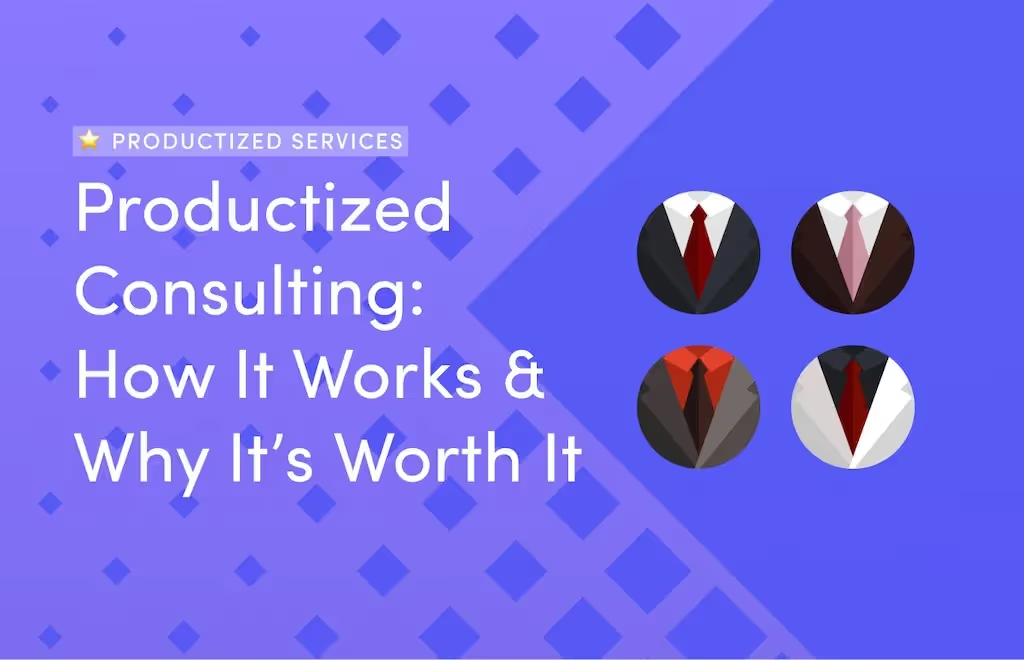


Let's say you own a design agency, and a client hires you to revamp their landing page. You discuss pricing, deliver excellent work, and they're thrilled with the results.
Soon, another client messages you with the same need, and maybe the first client introduced you to a friend who also wants a landing page redesign.
What's happening?
You've repeatedly provided the same service to different clients with similar needs. When this happens often, you can sell that service as a ready-made product.
Productized consulting is when you package your expertise into a standardized service with fixed pricing, clear deliverables, and a defined process.
Rather than create custom proposals for each client, you offer them pre-designed service packages that clients can purchase “off the shelf”, like when they buy a product online. Your clients pick a service, pay for it, and you deliver. There's no negotiation or long proposal.
Here’s an example from Spicy Margarita:

Productizing creative agency consulting services takes more than slapping a price on a service and hoping clients understand your message. Here's how to properly build productized services that attract clients:
The truth is you can't productize every service you offer. Some of these services are deeply customized to satisfy your client's needs. You should find projects that your team has done again and again in a similar process for different clients. These projects should also have predictable outcomes to show clients that you have established expectations when it comes to results.
How do you do this?
Audit all your previous work with clients, and look for these patterns in the services you provide repeatedly:
You'll find that parts of your creative process, rather than the entire custom projects can be productized. You should be careful not to productize services that need a high level of customization, like multiphase campaigns or strategic initiatives where you'll need client-specific knowledge to move forward in the project.
Abd Raaz, an SEO specialist, advises that:
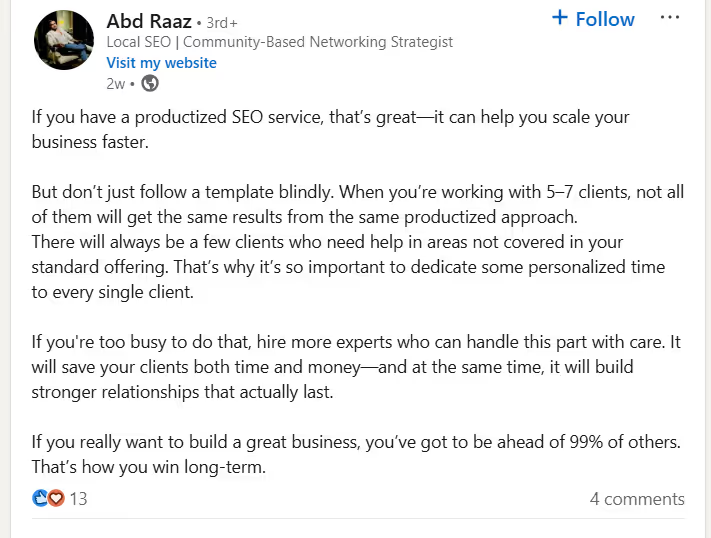
For each productized service you create;
Unclear deliverables are the primary cause of scope creep, client dissatisfaction, and profit margin erosion. When a client purchases your productized service, they should know precisely what they'll receive and when they'll receive it.
Most successful productized services use a "what's included/what's not included" format in their service descriptions.
For example;
A UX audit package might include:
Explicitly not included:
This approach allows clients to self-qualify and understand what they are purchasing. Anything else, and you'd have a jumbled and unclear onboarding process.
Our client, FlowSpark, had a similar issue. They needed a scalable way to sell their services without confusing their teams and their clients. So rather than offer custom projects, they productized their offerings, and with ManyRequests, they found an easy way for clients to browse these offerings and check out directly through their website.
With ManyRequests' checkout forms, FlowSpark could create recurring services and linked checkout forms on their website.
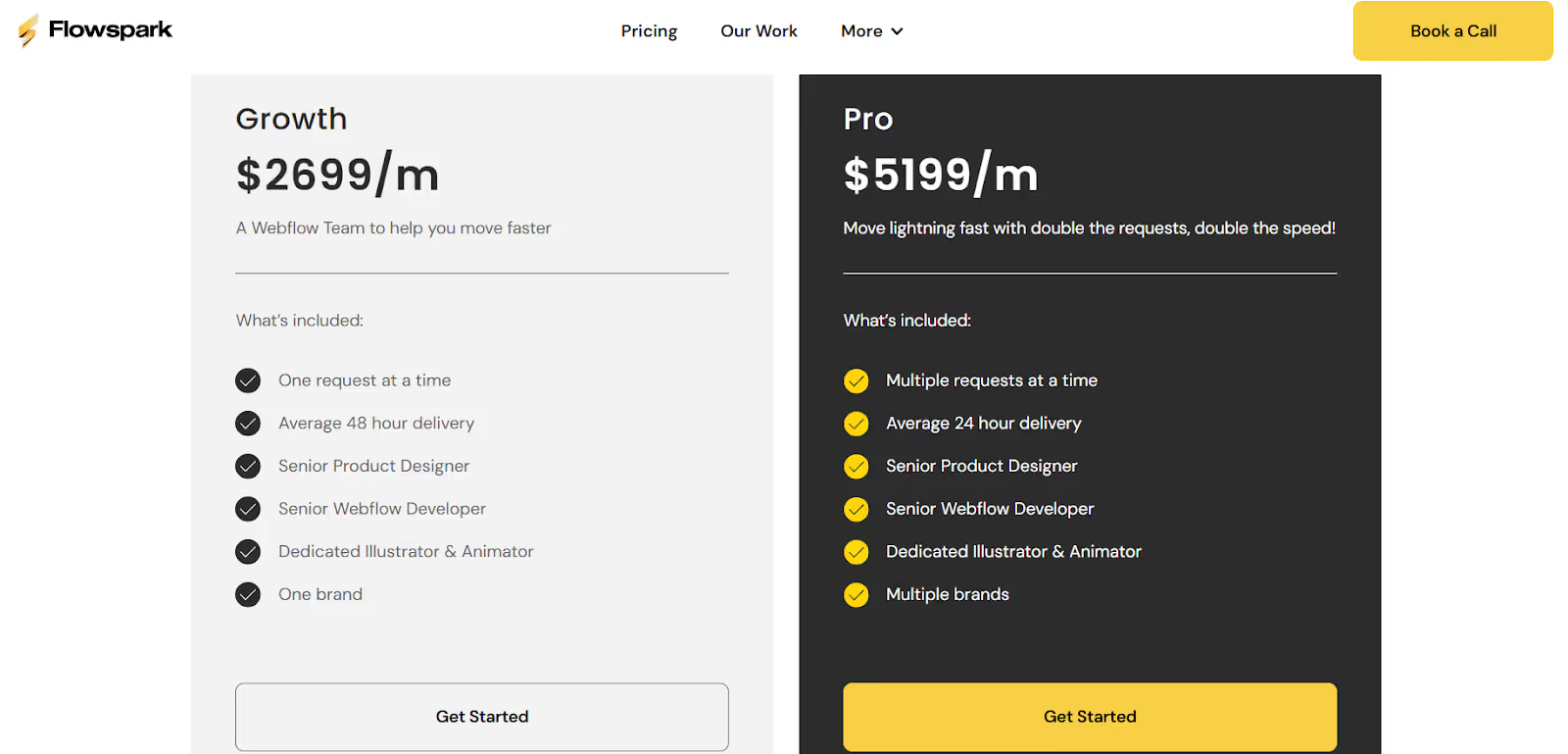
This meant that their prospective clients could immediately sign up and send their requests. If you press “Get Started”, it takes you to their checkout page to choose a subscription type and pay.

ManyRequests also integrates with Stripe, which means that your clients can pay directly through the platform.
Andy Dao, CEO of FlowSpark, says:
“We like the ability of selling hourly-based packs through ManyRequests. Clients can see their usage and top up more hours as they go.”

Tiered pricing creates low-risk entry points for new clients. Research has shown that when clients are presented with three options, they'll go for the middle tier. It's called a compromise effect.
This way, they can start where it's comfortable, and as they work with your agency, they're more likely to upgrade to higher tiers or even ask for custom solutions.
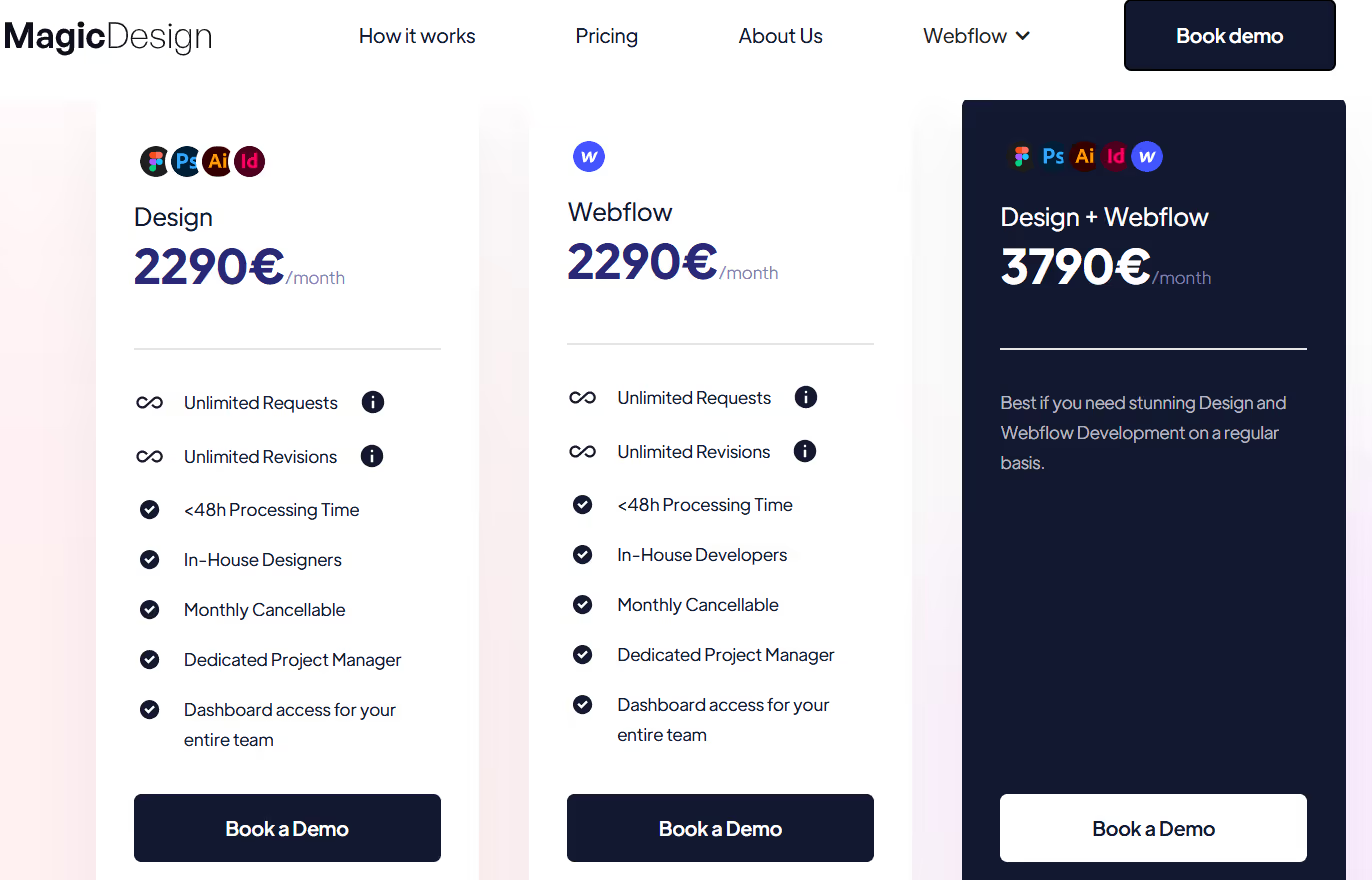
Here's how to do that:
Here's an example of a tiered pricing system for a brand identity package:
Before you sell your services, do these:
ManyRequests provides a comprehensive solution to manage your internal processes. The platform offers creative agencies:
You can create a link to your catalog to add to your website and social media platforms, so prospective clients can check out your services before reaching out.
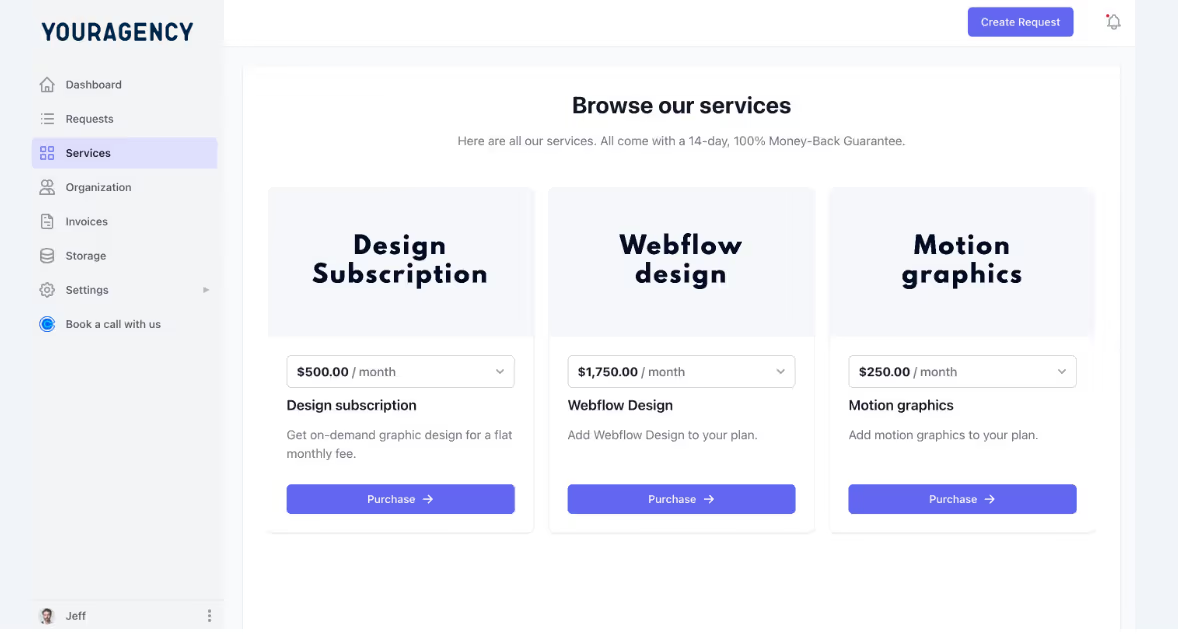
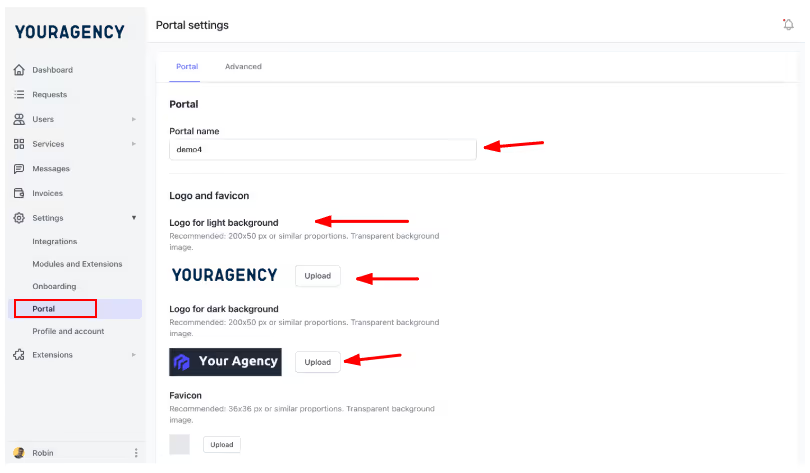
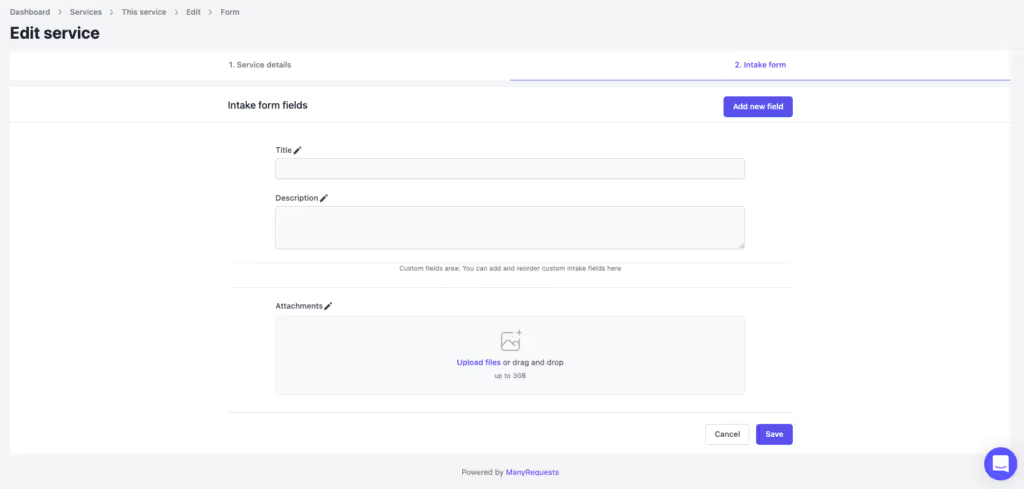
Through the dashboard, you can assign new requests to your team and add project details like the deadline and priority levels.

The assigned team member can change the status as the task progresses. ManyRequests notifies you and the client of these status changes, so you can keep them in the loop.
You can do all of these on one platform. Sign up for a 14-day free trial (no credit card needed).
Productized services improve how your agency handles clients and their needs. These are some benefits of productized consulting for creative agencies:
Productized services create consistent, forecastable cash flow with fixed pricing packages. This means you know how much the agency earns for each service, which helps you plan for growth and invest in resources. It's different from the usual feast-to-famine work cycle that's become the norm for creatives.
It's easier to refine your process when you deliver the same service again and again. Your team can improve their skills when they handle similar projects repeatedly. If they use a project management system like ManyRequests, they can create templates and workflows to use for clients who purchase your services.
Scope creep is when clients expect you to do more work than agreed, like extra reviews and designs. Productized services define what's included in each package before work begins, which helps establish boundaries.
When clients ask for additions, you can refer to the package and offer the extra work as a separate service. ManyRequests has an Add-on feature to help you charge for extra work separately.
Productized services cut the line on custom proposals and negotiations that can go on for weeks. Clients can compare their options, make decisions faster, and your team can spend more time on the project.
With standardized services, you can create systematic onboarding processes that collect the necessary information.
ManyRequests simplifies this process with customizable requests forms for clients.
When a client purchases your productized service, ManyRequests automatically guides them through a series of questions that you need to begin the project (brand assets, website credentials, target audience information, preferences, anything).

You can customize these questions to fit the services you're rendering, and this makes onboarding easier on both the agency and the clients.
Productized consulting increases your chances of higher profitability and customer satisfaction. This is why you should carefully create standardized services that promise (and deliver) value. If you need help organizing and improving your productized offerings, try ManyRequests for 14-days to see how it improves your packaging.
Productized consulting is when consultants package their expertise into standardized services offering with a fixed pricing, project scope, and deliverables.
Product development consulting helps businesses design, develop, and launch new products or services.
To build your productized services;
Originally Published: June 20, 2021